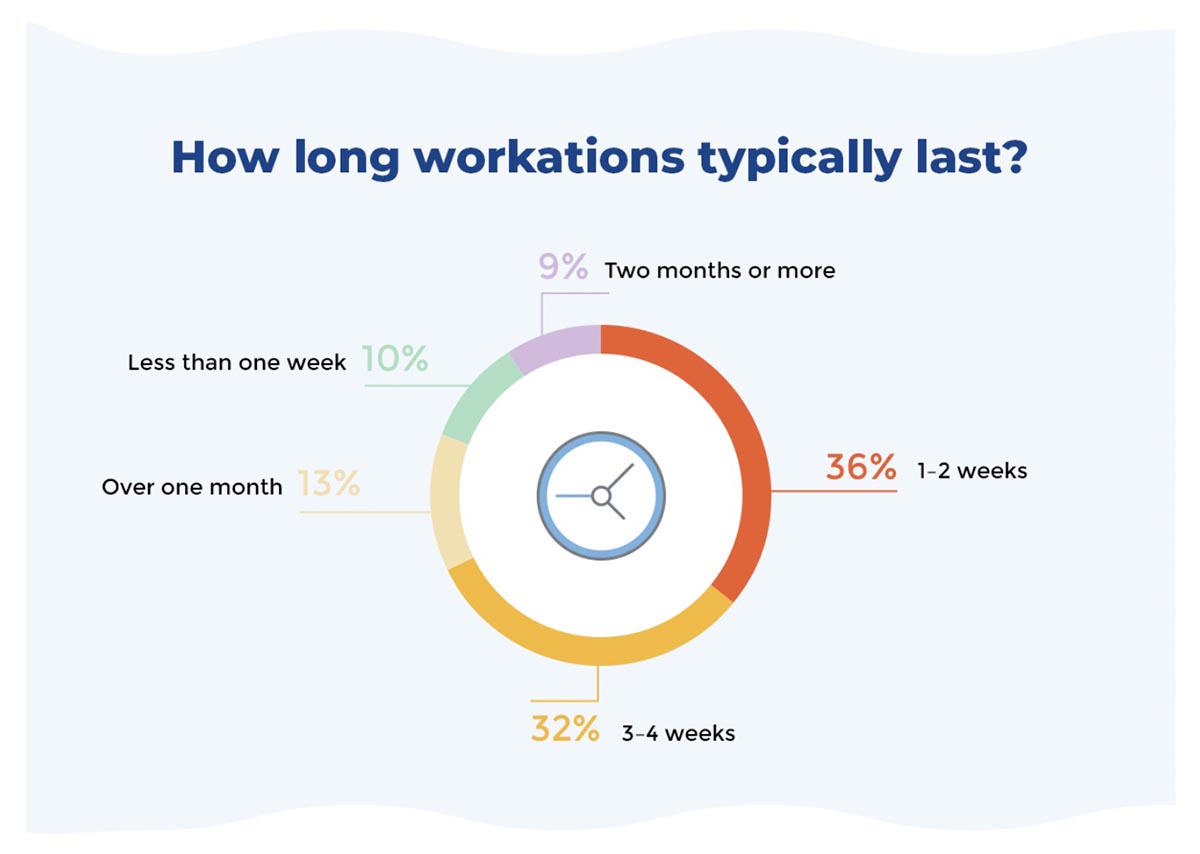As the printing industry struggles to maintain a pipeline of new talent, keeping the talent we have becomes all the more important. A new survey on the value of “workations” illustrates one simple way that print providers can retain the talent on their teams.
In this country, we spend one-third of our lives working. While any employee would love a higher salary, of course, salaries aren’t always the reason employees stay with you. Work environment matters, too—sometimes more than we might think. Studies are increasingly showing that the quality of the time spent at work can be a determining factor in the employee’s longevity at the company. Happier employees are also anywhere from 12% to 20% more productive.
So what can you do to improve your employees’ happiness and the quality of the time they spend in the office? Increasingly, workations are a part of that mix.
In this respect, the COVID-19 pandemic did U.S. business a favor. With so many companies establishing remote work out of necessity, companies have learned that, for certain roles, employees no longer have to be on-site in order to be productive. This has opened the door to workations, or vacations in which employees continue to work remotely. This gives employees the opportunity to decompress and recharge without having to carve out dedicated time away from the office. Just how much work an employee must do in order to qualify as actually working is up to each individual employer, but thanks to the visibility and accessibility of automated workflows, even many managerial-level employees in production can consider workations these days.
The value of allowing workations is becoming more widely recognized. According to a Passport-Photo.Online poll of 1,000+ workers, most people (67%), went on workations to “recharge their mental and emotional batteries,” and 86% of employees agree or strongly agree that a workation boosted their productivity once they got back.
Here are some other benefits of workations:
- 81% of Americans grew more creative at work after taking a workation.
- Nearly 69% are less likely to quit after going on workation.
- As many as 83% “agree” or “strongly agree” that a workation helped them cope with burnout.
- Roughly 84% of workationers are now more satisfied with their jobs.
- 94% plan to workation again in 2022 and beyond.
Suddenly, those workations don’t sound as much like an unnecessary luxury.

Source: Passport-Photo.Online
That said, companies allowing workations should be prepared for those employees to be out of the office for a while. While the plurality of workationers said their stays typically last 1–2 weeks (36%), another third (32%) said they lasted 3–4 weeks. Thirteen percent said they lasted more than one month. While this might sound like a ridiculously long and unworkable amount of time to some, let’s get real. With so many people working remotely now, even in the printing industry, would anyone really notice? Is there really any difference between working out of a home office and working from a hotel on the beach?
Clearly, this isn’t going to work for certain types of employees, but for others, it does. With the “brain drain” happening in the printing industry as both young talent and experienced talent are being drawn into other industries, any discomfort companies might feel in allowing (or even supporting) workations may start to be outweighed by the value of keeping those employees happy, productive, and retained.
I’d love to hear your thoughts. Chime in!















Discussion
Only verified members can comment.